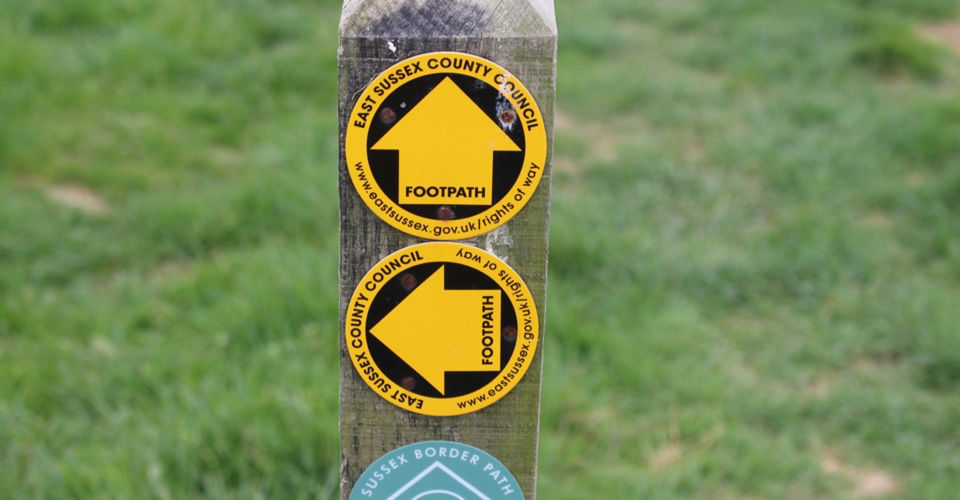
Know your signs

SIGNS
Here are some common signs you're likely to come across while out walking and what they mean:

Footpath
Applies in England and Wales. Open to walkers only, waymarked with a yellow arrow.

Bridleway
Applies in England and Wales. Open to walkers, horse-riders and cyclists, waymarked with a blue arrow.

Restricted byway
Applies in England and Wales. Open to walkers, cyclists, horse-riders and horse-drawn vehicles, waymarked with a plum coloured arrow.

Byway open to all traffic (BOAT)
Applies in England and Wales. Open to walkers, cyclists, horse-riders, horse-drawn vehicles and motor vehicles, waymarked with a red arrow.

National Trails
Identifies 15 long distance routes in England and Wales. All are open for walking and some trails are also suitable for cyclists, horse-riders and people with limited mobility. Find out more about National Trails.

Scotland's Great Trails
Identifies 26 long distance routes in Scotland. With the exception of the Great Glen Canoe Trail, all are open for walking and some trails are also suitable for cyclists, horse-riders and people with limited mobility. Find out more about Scotland's Great Trails.

Negative access symbol
May be used to mark the end of area-wide access although other access rights may exist, for example public rights of way.

Open Access land
Just over a million hectares of mountain, moorland, heathland, down land, common land and public-owned woodland in England and Wales is available to people to walk, run, explore, climb and watch wildlife, without having to stay on paths. Visit the Natural England website for maps and any current restrictions in place.

Home Zones
Home Zones – where roads and streets have been physically altered into more community-friendly spaces – give equal priority to drivers and people on foot or on bikes, with traffic-calming measures, very low traffic speeds and clear signs to alert and remind drivers to act with greater care.

Quiet Lanes
Local authorities can designate roads as Quiet Lanes to make them safer and more attractive to walkers, cyclists and horse riders. Quiet lanes are usually minor rural roads connecting local villages and communities – and often footpaths and bridleways – where drivers are expected to adhere to lower speed limits.
For more information on where you can walk in Britain and sensible rules to follow read the Countryside Code and Scottish Outdoor Access Code.
